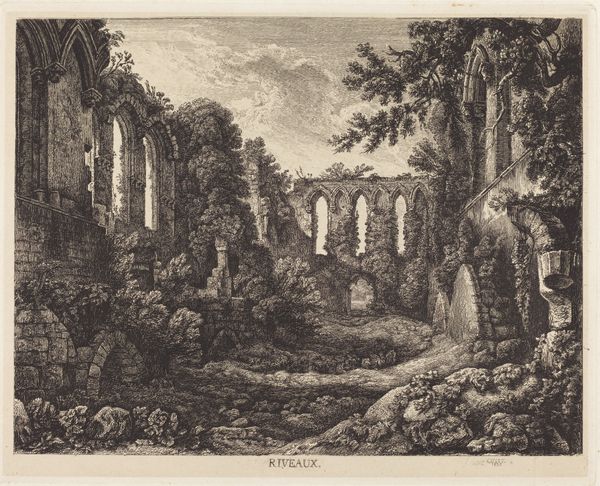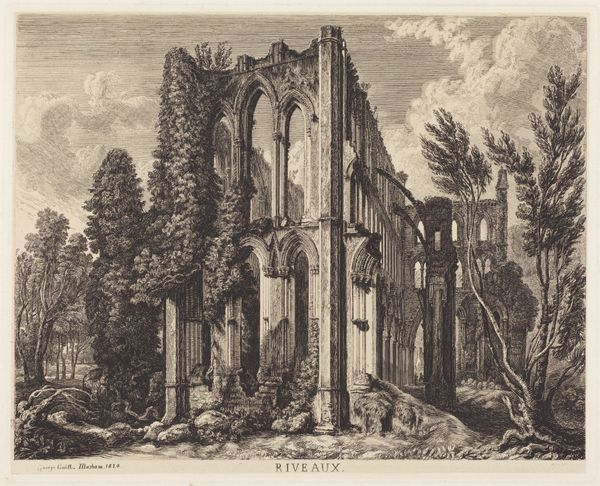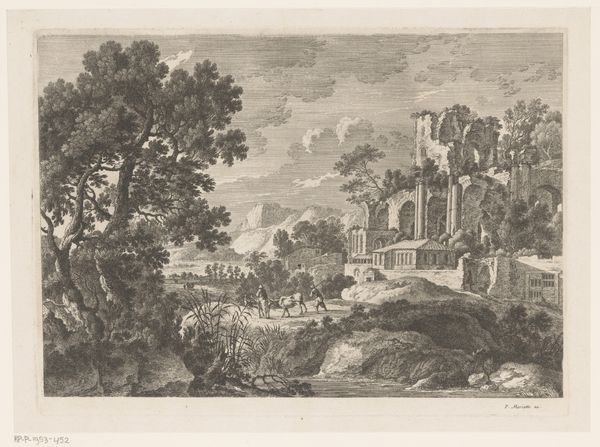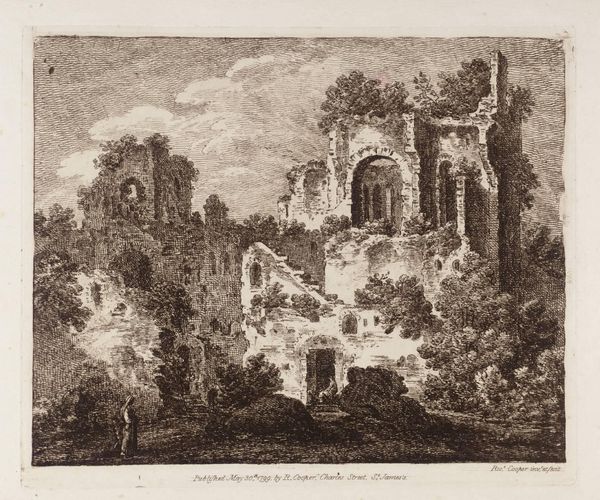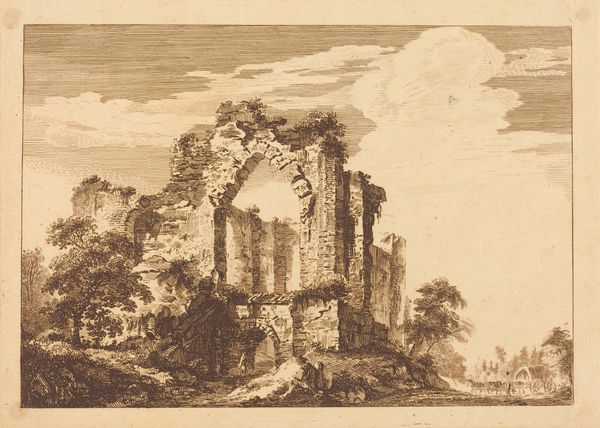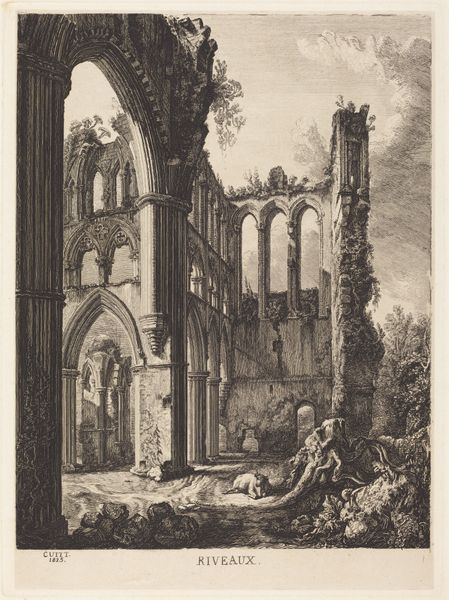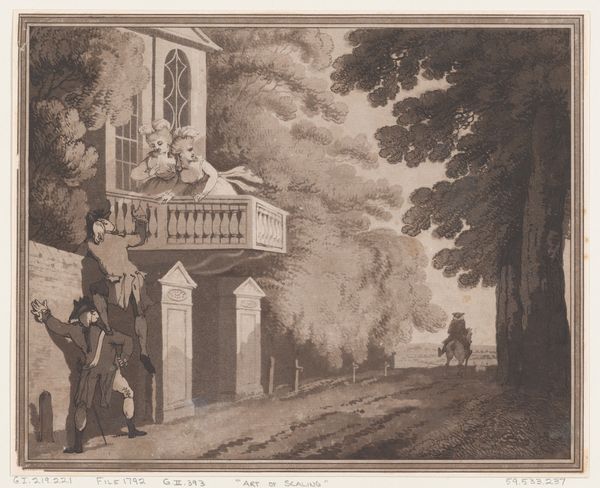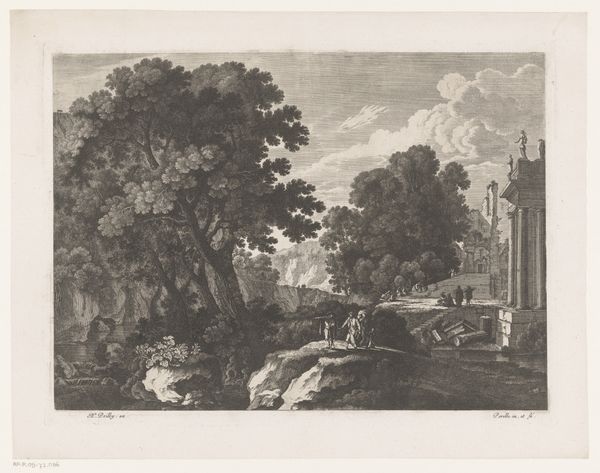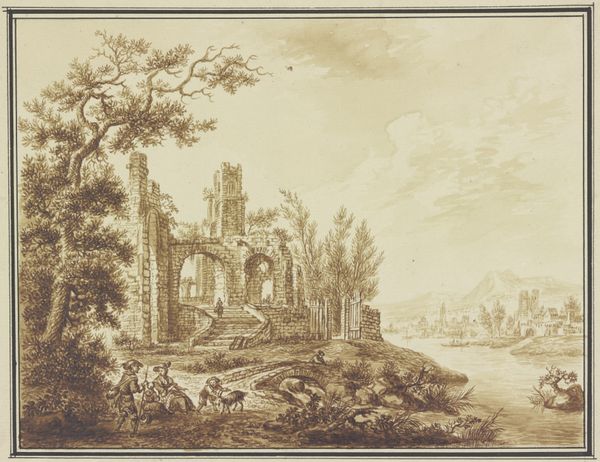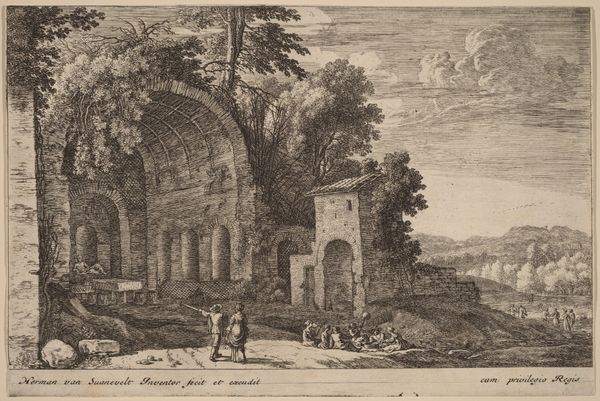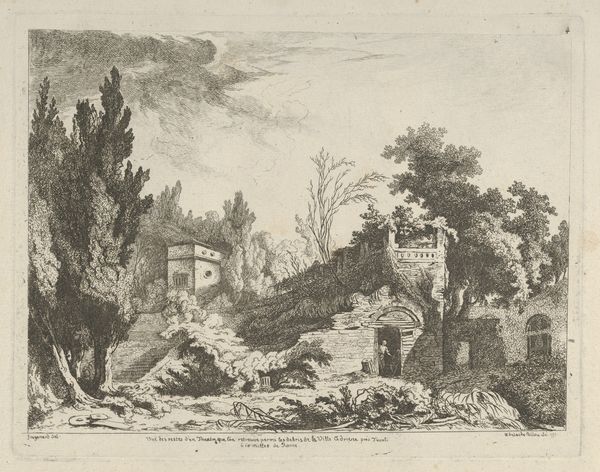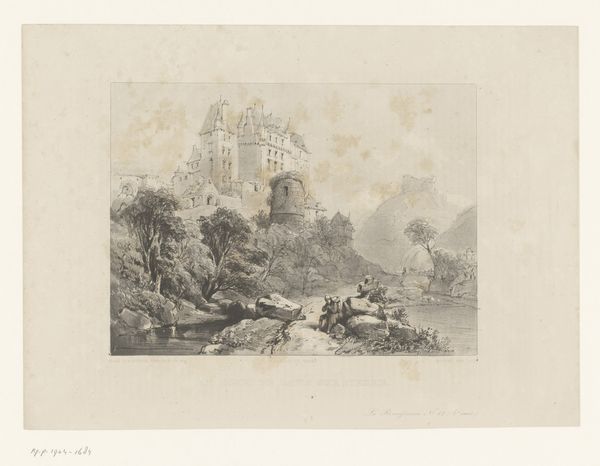
#
pencil drawn
#
toned paper
#
light pencil work
# print
#
pencil sketch
#
charcoal drawing
#
pencil drawing
#
coffee painting
#
pencil work
#
watercolour illustration
#
watercolor
Copyright: National Gallery of Art: CC0 1.0
Curator: Let’s turn our attention now to this print: Paul Sandby's "Ruins with Two Women Washing Clothes in a River," dating from 1758. Editor: There's a real feeling of decay mixed with the everyday. It’s all rendered in this sepia tone which seems to heighten that sense of melancholy beauty. The figures, caught in the midst of labor, juxtapose quite intriguingly with the scale of architecture surrounding them. Curator: Absolutely. Sandby was really at the forefront of a movement popularizing picturesque views, and these romantic ruins became powerful symbols of a bygone era, a testament to history. You'll notice how the ruins command a majestic, if crumbling, presence within the landscape. Editor: And yet, they're printed, reproduced, made easily accessible. The materiality is quite democratic, isn't it? It democratizes the romantic ideals and landscape Sandby has composed in his artwork and suggests new audiences gaining the access through such artwork. How revolutionary such kind of access through the reproduction methods might have been during that period? Curator: Indeed, printmaking facilitated wider access. The art market in the 18th century was changing. More people, from the rising middle classes, were becoming consumers of art, eager for images that spoke to notions of national identity, aesthetic sensibilities, and, of course, social status. These prints catered to this growing appetite. Editor: And Sandby’s process of etching is so crucial here. He captures texture so deftly – the rough stone of the ruins, the rippling water, the fabric of the women’s clothing. It's an art of careful labor meeting careful observation. These very production methods also speak about possibilities such artwork provided in creating cultural heritage... Curator: A beautiful point. This image then is more than just a pretty view; it reflects broader social shifts, the commercialization of art, and the evolving relationship between artist, artwork, and audience. It speaks volumes about the world in which it was produced and consumed. Editor: Yes, seeing how everyday work exists beside decay through the very meticulous process which in its turn allows greater public access helps grasp that social changes do come together through unexpected perspectives... Thank you for the detailed background. Curator: And thank you for making us consider the very means by which such widespread views of history, art and social structure came to be known for wider audiences.
Comments
No comments
Be the first to comment and join the conversation on the ultimate creative platform.
